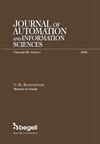DETERMINATION OF THE OPTIMAL ORDER PORTFOLIO FROM THE MANY OF POSSIBLE
Q3 Engineering
Journal of Automation and Information Sciences
Pub Date : 2021-01-01
DOI:10.34229/0572-2691-2021-1-9
引用次数: 0
Abstract
The problem of optimal portfolio of purchase of products (services) at the enterprises from many possible ones is considered. In this setting, the problem is explored and solved for the first time using a simulation tool. A mathematical model of the problem is built and an algorithm for its solution is developed. When building a mathematical model, the following parameters are taken into account: the number of types of products / services purchased; the number of enterprises that produce the required products; the need for products of a certain type; the cost of manufacturing a unit of production of each type at each enterprise; generalized indicator of quality of manufactured products of each type at each enterprise; index of identified comparative advantages in the manufacture of products j-th enterprise; the general budget of funds allocated for the purchase of products (financing the manufacture of products). The developed mathematical model makes it possible to find the optimal result of distribution of the required volume of orders (purchases) of each type of products at different enterprises (or at one enterprise), which provides the maximum offered level of product quality, and product purchase costs do not exceed the planned level. To illustrate the results of the developed algorithm, the example shows the search for the best option for purchasing products of four types (meeting a specific need) at each of the five companies offering these types of products. The proposed algorithm is of interest for practical application, makes it possible to determine the optimal portfolio of purchases of products (semi-finished products, parts), to solve the problem of optimal "package" purchases / orders. It is advisable to use it in private business, in enterprises of various spheres of activity and forms of ownership, as well as at the macro level of the economy, in particular, in the process of finding optimal options for government programs.从多个可能因素中确定最优订单组合
考虑了企业从多个可能的企业购买产品(服务)的最优组合问题。在这种情况下,首次使用模拟工具来探索和解决该问题。建立了该问题的数学模型,并开发了求解该问题的算法。在建立数学模型时,要考虑以下参数:购买的产品/服务类型的数量;生产所需产品的企业数量;对某种类型产品的需求;每个企业制造每种类型的生产单位的成本;每个企业每种类型的制成品质量的通用指标;第j家企业确定的产品制造比较优势指数;用于购买产品(为产品制造提供资金)的资金总预算。所开发的数学模型可以找到不同企业(或一家企业)每种类型产品所需订单(采购)量的最佳分配结果,这提供了最大的产品质量水平,并且产品采购成本不超过计划水平。为了说明所开发算法的结果,该示例显示了在提供四种类型产品的五家公司中的每一家公司搜索购买四种类型(满足特定需求)产品的最佳选项。所提出的算法具有实际应用价值,可以确定产品(半成品、零件)的最佳采购组合,以解决最佳“一揽子”采购/订单问题。建议将其用于私营企业、各种活动领域和所有制形式的企业,以及宏观经济层面,特别是在为政府计划寻找最佳选择的过程中。
本文章由计算机程序翻译,如有差异,请以英文原文为准。
求助全文
约1分钟内获得全文
求助全文
来源期刊

Journal of Automation and Information Sciences
AUTOMATION & CONTROL SYSTEMS-
自引率
0.00%
发文量
0
审稿时长
6-12 weeks
期刊介绍:
This journal contains translations of papers from the Russian-language bimonthly "Mezhdunarodnyi nauchno-tekhnicheskiy zhurnal "Problemy upravleniya i informatiki". Subjects covered include information sciences such as pattern recognition, forecasting, identification and evaluation of complex systems, information security, fault diagnosis and reliability. In addition, the journal also deals with such automation subjects as adaptive, stochastic and optimal control, control and identification under uncertainty, robotics, and applications of user-friendly computers in management of economic, industrial, biological, and medical systems. The Journal of Automation and Information Sciences will appeal to professionals in control systems, communications, computers, engineering in biology and medicine, instrumentation and measurement, and those interested in the social implications of technology.
 求助内容:
求助内容: 应助结果提醒方式:
应助结果提醒方式:


